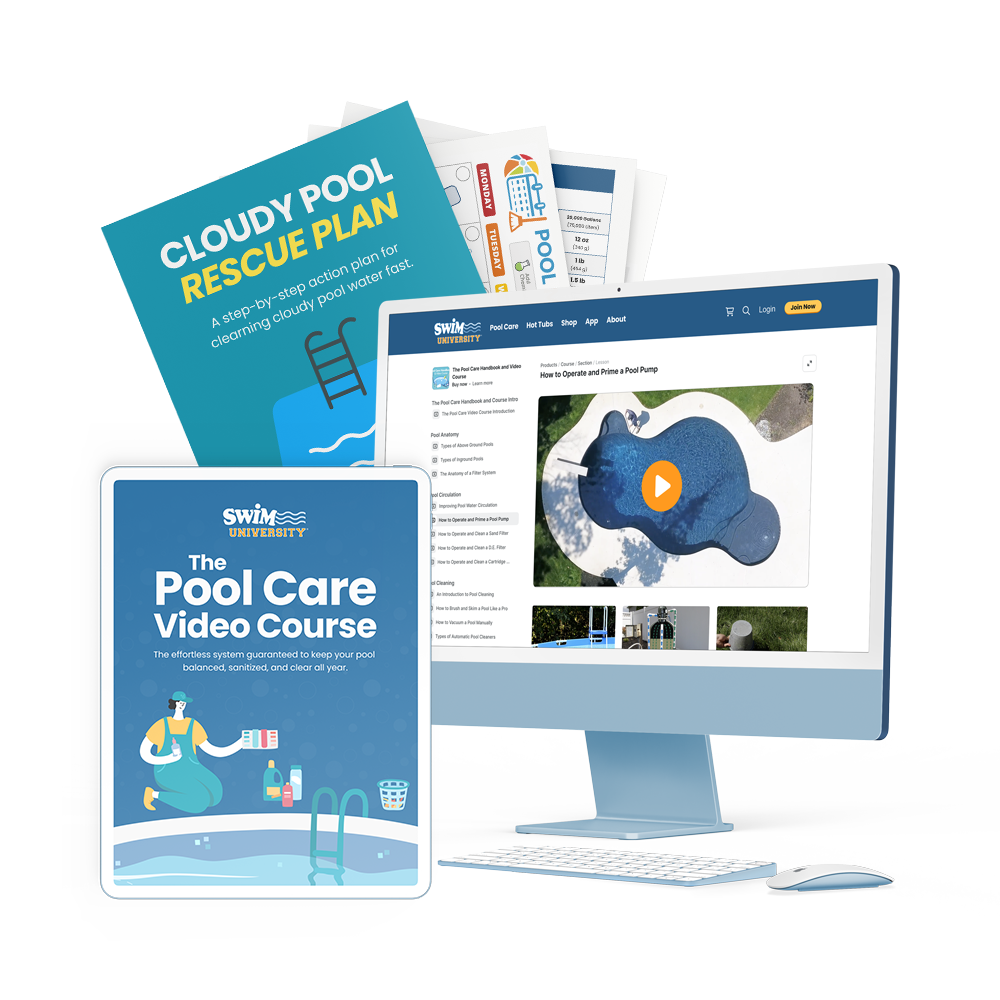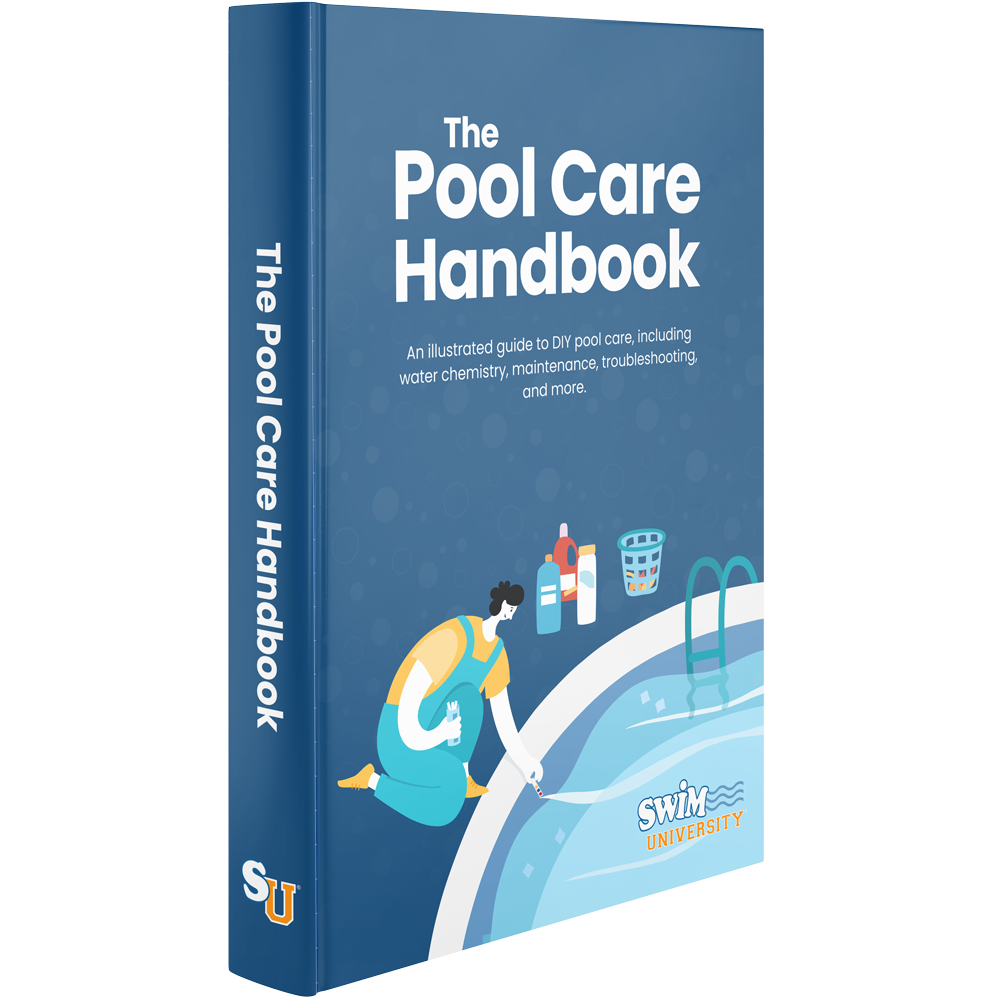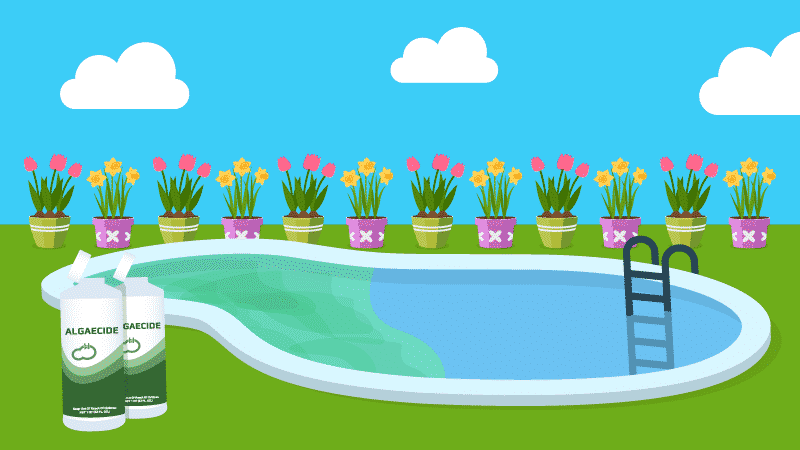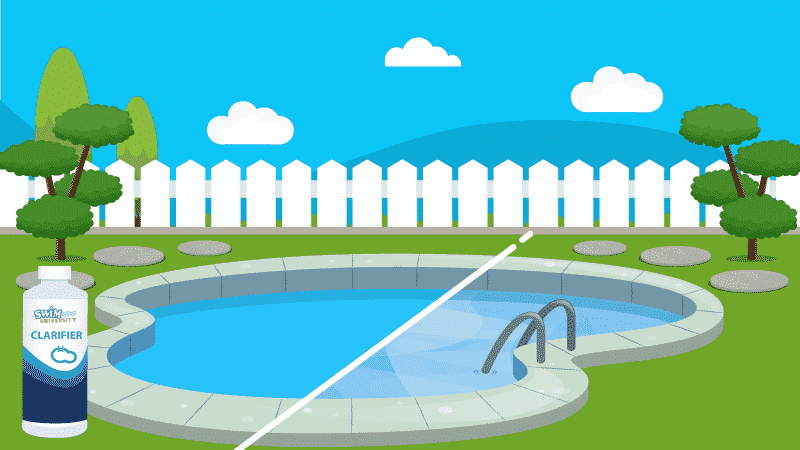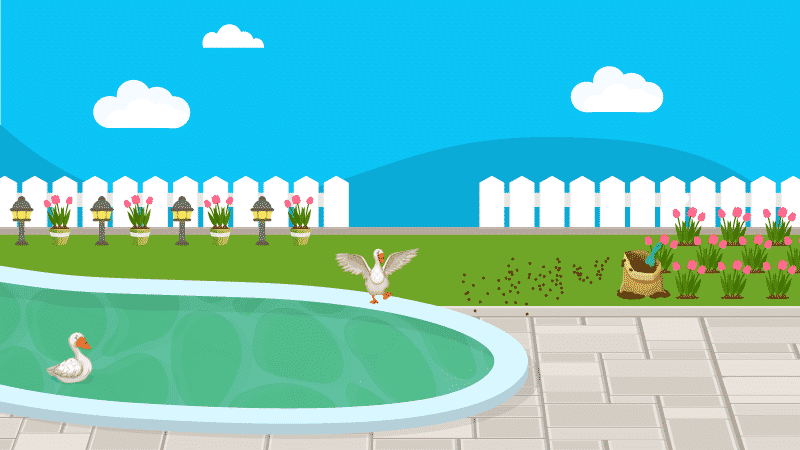CYA Levels Low? Here’s How To Raise Cyanuric Acid in a Pool
Cyanuric acid, or CYA, is also known as pool conditioner or pool stabilizer. And it’s crucial for protecting your chlorine from being destroyed by the sun’s UV rays. So if your CYA levels are too low, your chlorine won’t last as long — and that leads to unsanitary pool water.
When do you know if your CYA is too low? Your pool’s cyanuric acid levels should be between 30 and 50 parts per million (PPM) and even a little higher for saltwater pools. However, indoor pool owners don’t have to worry about CYA levels, since the chlorine isn’t directly impacted by the sun’s ultraviolet rays. Cyanuric acid is only really a concern for outdoor pool owners.
In order to raise your cyanuric acid levels, you’ll need to add a pool stabilizer or pool conditioner to your water. You can also start using stabilized chlorine, like sodium dichlor or trichlor, to sanitize your pool.
If you’re wondering why these levels are low in your pool and how to bring them up, here’s everything you need to know about what causes low cyanuric acid levels and how to raise cyanuric acid in your pool. Watch the quick video below or keep reading for a complete guide to CYA.
What Causes Low Cyanuric Acid?
Chances are, your CYA level is low because you’re not using stabilized chlorine in your pool. Stabilized chlorine, like sodium dichlor or trichlor tablets and granules, already contains cyanuric acid. This helps protect it from being destroyed by the UV rays from the sun. If you’re using unstabilized chlorine, Unstabilized chlorine, like sodium hypochlorite (liquid chlorine), lithium hypochlorite, and calcium hypochlorite, does not contain cyanuric acid.
Other things like rain, splashout, and water dilution can cause a decline in your cyanuric levels as well. So if you’ve had to partially drain and refill your water recently, you will also have low CYA levels.
Stop wasting time and money with confusing water chemistry and maintenance. Our effortless system guarantees to keep your pool balanced, sanitized, and crystal clear all year. Works for all pools including saltwater.
What Happens if Cyanuric Acid Levels are Too Low?
When the level of cyanuric acid is too low in a pool, you can end up with all kinds of chlorine problems and unsanitary water issues.
Chlorine Use Increases
Sunlight naturally breaks down pool chlorine — and quickly. An entire pool’s worth could be gone within a few hours and without CYA present to protect it, you could find yourself adding more chlorine daily to keep it clean.
Chlorine Won’t Sanitize As Effectively
Because the sunlight is essentially eating your chlorine, there’s just not enough available to keep the water clean. Pollutants, bacteria, and viruses can easily take over the water.
Pool Water Can Turn Green with Algae Growth
When you’re water isn’t clean, it may become the perfect breeding ground for algae growth. And green isn’t the only color you need to worry about. Some bacteria can even lead to black algae or pink slime – and no matter what color it is – it’s unsafe for swimmers. It’s every pool owner’s nightmare.
Unbalanced Pool Water Chemistry
Your chlorine level drops if there is not enough CYA in the water to protect it. Inadequate chlorine levels can’t keep the water clean and set off a chain reaction affecting total alkalinity and pH balance.
Chlorine Smell and Chloramine Build up
With low CYA, the free chlorine gets used up faster. When the chlorine in the pool binds to pollutants like urine, sweat, and sunblock, it creates combined chlorine or chloramines. This kind of chlorine is less effective as a sanitizer and contributes to that strong chlorine smell you’ve undoubtedly experienced at public pools.
This is the ultimate guide to keeping your pool sparkling clean throughout the year that contains everything you need to know about taking care of your pool the right way. Including saltwater pools.
How To Raise Cyanuric Acid Levels in A Pool (2 Ways)
There are two things you can do to increase your CYA levels: add stabilized chlorine or add a pool stabilizer and conditioner (pure cyanuric acid).
Before you add anything to your pool, test your water using a liquid test kit or test strips. Then balance your pH level and total alkalinity first. This will help any chemicals you add later work more effectively.
Note: It’s much harder to lower cyanuric acid levels than it is to raise them, so don’t overdo it. You can always add more stabilized chlorine or CYA later if needed.
1. Add Stabilized Chlorine
If you purchase a form of stabilized chlorine, such as dichlor or trichlor granules or tablets, your chlorine will come with cyanuric acid. So if you’ve been using unstabilized chlorine or liquid bleach, this can be a way to introduce CYA into your water. You can buy stabilized chlorine in chlorine tablets, granular form, or liquid chlorine.
If you have chronically low cyanuric acid levels, look for tablet or granular chlorine products with cyanuric acid and consider having them on hand as part of your regular pool chemical supply.
Stock up and save money on chlorine tablets for the season by getting the standard 3-inch stabilized chlorine pucks.
2. Add Pure Cyanuric Acid (Pool Conditioner or Stabilizer)
If you want to control the amount of cyanuric acid in your water, you can add pure CYA directly, also known as a chlorine stabilizer or chlorine conditioner.
Keep your chlorine from being burned off too quickly by the sun's UV rays. CYA will help you keep a better chlorine reading in your pool.
As a general guideline, 13 ounces of pool stabilizer will raise a 10,000-gallon pool’s CYA levels by 10 ppm. Remember that your CYA levels should be between 30 and 50 ppm. Keep in mind that because CYA lingers in the work, you usually only need to add it once or twice a year. And it’s easier to add more cyanuric acid than it is to reduce it, so take things slowly.
Finally, cyanuric acid is exactly that: an acid. So if you don’t add the pool stabilizer correctly, it could damage your pool. Vinyl pool liners are incredibly susceptible to CYA damage. And be sure to wear protective gear, like goggles and acid-resistant gloves.
How To Add Pool Stabilizer and Conditioner
Before adding any chemicals, start by testing and balancing your pool water so you know how much you need to raise your CYA levels.
Start with a 5-gallon bucket of pool water. Add the pool stabilizer or pool conditioner to the bucket of water. Do not add the water to the CYA – you don’t want splashback!
Then pour all five gallons of water-CYA solution into the pool’s skimmer and run your pool pump for several hours to help it circulate.
Finally, retest your pool’s chemical levels and adjust if needed. Repeat the process if you still have lower cyanuric acid levels than expected.
You can also try adding CYA to an old sock or panty hose and hang it in front of your skimmer box or return jet. As the water passes through the sock, it’ll dissolve the CYA. This chemical is notorious for dissolving very slowly.
Be sure to add your pool stabilizer slowly. You can always add more later. But if you end up with too much cyanuric acid, you won’t need to completely drain it to balance your pool chemistry. Slowly drain a few inches of water off and refill the pool with fresh water.
Keep the water above the pool pump to prevent it from taking in air and getting damaged. If you need more help reducing your CYA levels, be sure to check out our guide on How To Lower Cyanuric Acid.
Frequently Asked Questions About How to Raise Cyanuric Acid
Need more help with cyanuric acid? Here are some common questions and answers.
What do I add to my pool if the cyanuric acid is too low?
If during the course of regular pool maintenance, you find your cyanuric acid levels are too low, you can either add stabilized chlorine or pure cyanuric acid, also known as pool conditioner or pool stabilizer. Stabilized chlorine already contains cyanuric acid.
Does baking soda raise cyanuric acid?
No baking soda doesn’t increase your CYA level. It does, however, raise your pool’s total alkalinity. It won’t protect or stabilize your chlorine levels.
Does pool shock raise cyanuric acid?
Pool shock can raise your cyanuric acid levels, depending on the type you use. If you use a stabilized chlorine shock, then yes, it will raise CYA because it’s the stabilizing ingredient.
Does Clorox bleach have cyanuric acid in it?
Clorox does not contain any CYA in it and will not increase the CYA levels in your water if you use it. Household bleach is unstabilized chlorine and will be destroyed by the sun’s UV rays.
Will low cyanuric acid make a pool cloudy?
If you’ve got an outdoor swimming pool and have low cyanuric acid, you may experience cloudy water. This is because CYA helps to keep your chlorine levels where they should be. And without it, the chlorine depletes faster, which leads to unstanitary cloudy water.
Does a saltwater pool need cyanuric acid?
Saltwater pools need CYA, and manufacturers recommend keeping it on the slightly higher side: between 60 and 80 PPM. In saltwater pools, you don’t add chlorine directly. Instead, you add salt, and the salt generator creates sodium hypochlorite, which also degrades under sunlight. Salt chlorine generator manufacturers recommend running with higher free chlorine levels, since the generators continuously create chlorine, it’s crucial to protect the existing chlorine.
4 Ways We Can Help With Your Pool
- Pool Care Cheat Sheets (Free): Easy-to-use downloadable guides to help you keep track of taking care of your pool this year.
- The Pool Care Handbook: An illustrated guide to DIY pool care, including water chemistry, maintenance, troubleshooting, and more.
- The Pool Care Video Course: You’ll get 30+ step-by-step videos and a downloadable guide with everything you need to know about pool maintenance.
- The Pool Care App: Enter your water test results. Get a custom treatment plan. Know exactly what chemicals to add to keep your pool clear.

